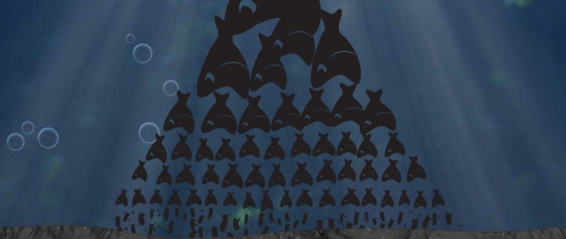Restoration as Sustainability
“Restoration” and “Sustainability” are two words that carry rhetorical weight when talking about the environment. The very term “restoration” makes us feel good and we all agree that any solution should be sustainable – especially when it comes to talking about the environment.
But when it comes to restoring a lake, these terms have very specific meanings. It’s important to continually ask what they mean and keep a critical eye on how both terms are being used in the marketplace. Calling something “restorative” doesn’t necessarily mean it is.
To restore is to restore balance and health. To sustain is to continously support and maintain that health.
When it comes to freshwater lakes and reservoirs – there’s no gray area. Any strategy and/or technology is either authentically “restorative” or not. It either restores a lake to a naturally healthy condition, or it doesn’t. The technology and the solution it provides is either sustainable, or it isn’t.
In our experience, when it comes to restoring a lake the two terms are not mutually exclusive. To restore a lake is to restore its ability to sustain itself under the continued burden of nutrient overloading. If you restore the lake’s nutrient cleaning mechanism which diverts nutrients into a healthy ecosystem, sustainability is achieved.
Unfortunately, most commonly used “Lake Restoration”/”Lake Management” strategies are not restorative. They treat the symptoms of Lake Ecosystem decline without fixing what’s wrong with the system in the first place.
We call these approaches “People Management Strategies.” They make us feel better by getting the weeds and algae out of sight, but do nothing to truly restore health and balance to the Lake Ecosystem. Read more about symptom treatment failures in our STRAIGHT TALK: 5 Lake Restoration Myths.
Sustainable Restoration – the technology, the company and the community
We’ve found that restoring a lake’s nutrient conversion system gives it the best shot at sustainable lake health. If you restore the system, you’ll not only repair the historical damage nutrient overloading has already caused the lake, you’ll give the lake what it needs to sustain itself in the future under the continual burden of overloading from the watershed. That’s what our technology does.
But sustaining lake restoration takes collaboration and partnership between a community and the company delivering restoration. In terms of the company, this means not only making sure the technology delivers, it also means doing as much as it can to make lake restoration financially sustainable by making it affordable. Restoring a lake is expensive. The good news is that working with nature instead of against it is cost-effective. It makes financial sense.
In terms of a community, sustaining restoration takes involvement and advocacy. Those who depend on the lake have the most powerfully influential voice when it comes to determining what happens to their lake. We’ve found that when the community gets involved and lake health is the goal, collaboration, restoration, and sustainable lake health happens.
























